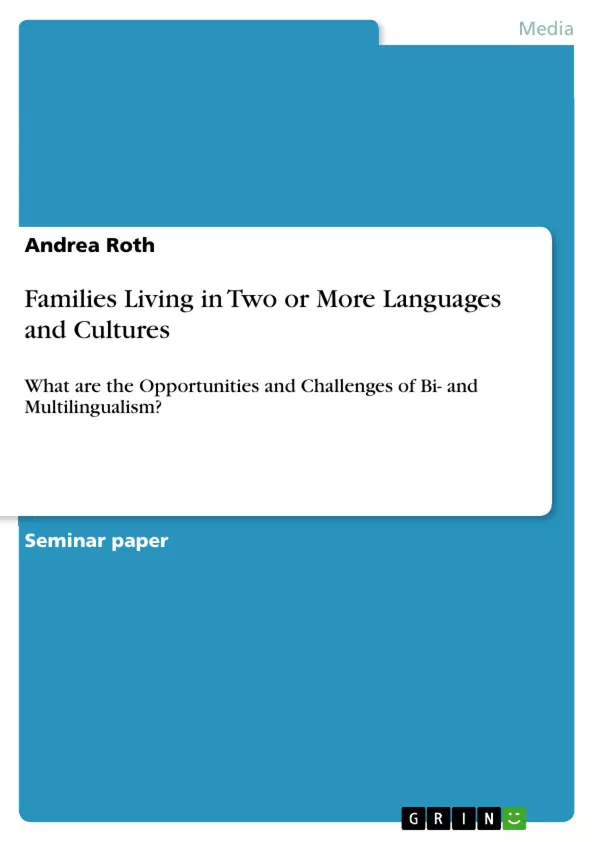The purpose of this term paper is to analyse the challenges and opportunities of bi-/multilingual families. Couples with two different nationalities and some, who have the same origin but immigrated into another country on the one hand, and children who have parents of different origins and therefore raised bi- or multilingual on the other, are to be analysed with regard to their mother tongue, language choice within and outside the family as well as their identity. Moreover, the phenomenon of code switching and its reasons as well as the use of language among siblings and between parents and their children will be examined. The last point of analysis shows the advantages and disadvantages of bi-/multilingualism outside the family.
Inhaltsverzeichnis (Table of Contents)
- Introduction
- Definitions
- Types of bilingualism
- Method of data collection and analysis
- Bi- or multilingualism among couples
- Bi- or multilingualism in children
- Bi- or multilingual and -cultural education
- Bi- or multilingualism within a family
- Conclusion
- References
- Appendix
Zielsetzung und Themenschwerpunkte (Objectives and Key Themes)
This term paper explores the challenges and opportunities faced by bi- or multilingual families in a globalised world. It investigates communication dynamics within these families, focusing on language choice, identity formation, and the phenomenon of code-switching. The study employs questionnaires to gather data from both parents and children in bi- or multilingual families with varying cultural backgrounds.
- Challenges and opportunities of bi- or multilingualism in families
- Language choice within and outside the family
- Identity formation in bi- or multilingual families
- Code-switching and its reasons
- Communication between parents and children in bi- or multilingual families
Zusammenfassung der Kapitel (Chapter Summaries)
- Introduction: This chapter sets the context for the study by highlighting the increasing prevalence of bi- or multilingual families in a globalised world. It emphasizes the importance of successful communication in these families and outlines the key areas of focus for the research.
- Definitions: This chapter provides definitions of key terms relevant to the study, including native language, home language, first language, second language, dominant language, couple tongue, bilingualism, multilingualism, and code-switching. It also delves into the various types of bilingualism, including simultaneous and successive bilingualism.
Schlüsselwörter (Keywords)
The main keywords and focus topics of this study include bilingualism, multilingualism, code-switching, communication, identity, cultural background, language choice, family dynamics, and intercultural exchange.
- Quote paper
- Andrea Roth (Author), 2017, Families Living in Two or More Languages and Cultures, Munich, GRIN Verlag, https://www.grin.com/document/378583



